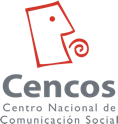The Content Cartel
Why Everybody Loves PRI
On the 4th of December 2017, the former Secretary of Social Development of Enrique Peña Nieto's government, José Antonio Meade, appeared on practically all front pages in the country. He was being appointed as the presidential candidate for the political party PRI (Partido Revolucionario Institucional) for the 2018 presidential elections. Although dozens of reporters and photographers from different media attended the event, which means there were a lot of possibilities for different coverage of the event – the published images, titles and texts were very similar.
Meade's image was reproduced in an almost identical way throughout the printed and the digital media sphere. For example, four powerful media groups, which have been analyzed in MOM Mexico, chose the same photography from the candidate: Meade, with his arms up in the air in triumph, on a red background where it was written “President of Mexico”. This happened only seven months before the elections held in July 2018, which won his main opponent, Andrés Manuel López Obrador, the candidate of the left-wing Movement of National Regeneration (Morena).
These “coincidences” are not an exception. In Mexico, regardless of the large quantity of traditional media outlets, such as journals, radio stations, free-to-air and pay TV channels, it is very common to have same or similar coverage for the same event, and almost always it is favorable for the ruling government. Media analysts have even developed a concept for this phenomenon: “la cargada mediática” explains a content cartel, where most mainstream media are either in favor of or against something or someone.
So the apparent, numeric plurality of media outlets in Mexico does not guarantee a diversity of content and this paradox is linked to the media ownership in the country: out of the 42 media outlets analyzed in this study, the most influential belong to 11 media groups, out of which 100% were openly and closely affiliated with the federal or state governments of that time, or connected through business interests. Influencing the opinion of a population of 127 million depends on the government’s leverage on a handful of families – and vice versa.
At least two thirds of the media outlets in the MOM sample belong to a conglomerate with diverse business activities, for example in the construction sector, health and hospitals or telecommunication; so very lucrative industries where media owners largely depend on the government as a client or regulatory power. Very often, these conglomerates maintain stakes in the media business not for their economic profitability – as most of them are perceived to make losses even, but to use them for leverage when negotiating public tenders.
Shut Down or Cede Control
Such an excessive economic dependency of the analyzed media outlets, in addition also through government advertising, explains the lack of content diversity: 92% of the media analyzed by MOM Mexico largely depend on governmental resources to survive. 78% of those media are owned by businesspeople without transparent safeguards of editorial independence in place. It can therefore be assumed, as it has also been pointed out by the Center for Investigation Fundar, that the editorial policy becomes a bargaining chip in order to gain a share of public spending worth almost 590 million of dollars in 2016 alone.
So when the media align with the governmental interests then they can expect to be rewarded with large quantities of money, but not only. The popularity and audience share could easily grow thanks to the granting of “exclusive interviews” or the forwarding of leaked “unedited documents” which are already approved by the government or certain public officials for their own benefit and/or for discrediting a political rival.
If, however, a certain media outlet does not align its editorial policy with the government, other businesses interests of the conglomerate could suffer.
Since there is no regulatory framework for the distribution of the budget for government advertising -in 2018 the General Law of Social Communication was approved, but civil society asks to abrogate it because instead of solving the main problem, it institutionalizes the arbitrary delivery of official publicity-, a media could stop receiving funds until it borders liquidation. Then its owners would have to choose between two evils: retreat from the media market or align its editorial policy. If they choose to survive, then like it or not, they are opting for being subordinate to the government whenever it is asked from them.



